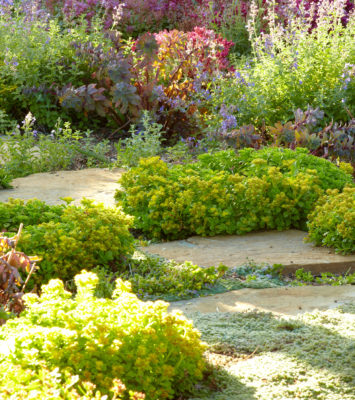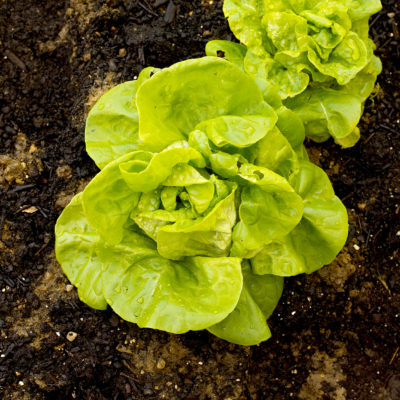
By Karen Weir-Jimerson, Better Homes & Gardens
So, what is sustainable gardening? There’s no official definition, but the idea is to minimize the impact that humans have on the earth. Following sustainable practices at home includes avoiding polluting chemicals, preserving natural resources, and reducing waste whenever possible. You don’t have to make huge changes right away if you want to start gardening in a more sustainable way; even something as simple as using natural weed killing methods instead of chemicals can help the environment. These sustainable gardening ideas will help you contribute to a happier, healthier planet.
1. Practice Organic Gardening
Going organic is an important part of sustainable gardening. Using fewer chemicals in your garden is more ecologically sound and more cost-effective. If you’re raising food for your family, gardening organically is even more important. Start from the ground up by building good soil rich in nutrients and add natural compost to amend the soil. If you discover insect pests or plant disease in your garden, treat them with organic solutions.
2. Mulch Your Landscape
Not only is mulching a great way to prevent weeds from springing up in your garden, but it also helps hold moisture in the soil. In areas with watering restrictions, this is especially important. Add a 2 to 3-inch layer of the mulch of your choice to your garden beds and around landscape plants. Mulch options for sustainable landscaping include: Shredded bark, cocoa bean hulls, pine needles, grass clippings, and coir (made from coconut hulls).
3. Plant Natives
Knowing how to grow a sustainable garden includes knowing what plants to use. Sustainable plants are those that are indigenous to your region, also called natives. These plants take less work, usually require less water, and thrive better than other perennials because they are already suited to your climate, rainfall, and soil types. Additionally, native plant species provide food and shelter for the native insect and bird populations.

4. Lose Your Lawn (Or Part of It)
A gorgeous, green, and weed-free lawn uses a lot of resources. Water and fertilizer are needed to keep most lawns looking in top shape. You can have more sustainable landscaping by reducing the area planted in grass and replacing it with easy-care perennial ornamental grasses, low-growing shrubs, or groundcovers.
5. Water Less
Using less water is an important element of sustainability, especially in areas where water is scarce and restricted. Xeriscaping, a method of gardening and landscaping that reduces the need for watering, incorporates a wide variety of attractive drought-tolerant shrubs and perennials. To collect water from Mother Nature to use on your plants, install a rain barrel at the base of one or more of your downspouts.

6. Grow Your Own Food
Growing sustainable vegetables, fruits, and herbs is satisfying, easy, and delicious. Plus, raising some of your own food is an essential part of a sustainable lifestyle. For a successful sustainable vegetable garden, plant intensively and by season. Crops, such as greens and lettuce, sprout quickly in the spring but die out in summer’s hot temps. Beds can be interplanted with hot-weather crops such as tomatoes and peppers. When autumn temps cool down, you can sow cool weather crops again, getting three seasons of food from the same area.
7. Plant Perennials
Long-lived perennials are an excellent way to get more bang from your gardening buck. Choose perennials that are adapted to your USDA Zone; you can find zone information on the plant tag. To save money, buy small perennials; they’ll get bigger and better every year. Every couple of years, they’ll need to be divided, which gives you more plants to enlarge your sustainable backyard garden or share with friends.8. Save SeedsWhen annual flowers go to seed at the end of the season, collect their dried seed heads and store them in a dry place all winter. You can sow the seeds in your garden next spring—no need to pay for additional seeds! Try this with marigold, sunflower, and morning glory.
9. Start Composting
One the best ways to partake in sustainable gardening practices is to compost your green waste. Grass clippings, deadheaded flowers, dried leaves, and more can be turned into a nutrient-rich sustainable fertilizer in a compost pile.
10. Mow with an Electric or Manual Mower
Using a gas-powered lawnmower pollutes the air, and it can really add up if you’re mowing every week in the spring. If you’d like to reduce your carbon footprint, consider manually operated lawn-care equipment, or use electric mowers, trimmers, and blowers.
STOP BY PAYNE’S NURSERY TODAY!
